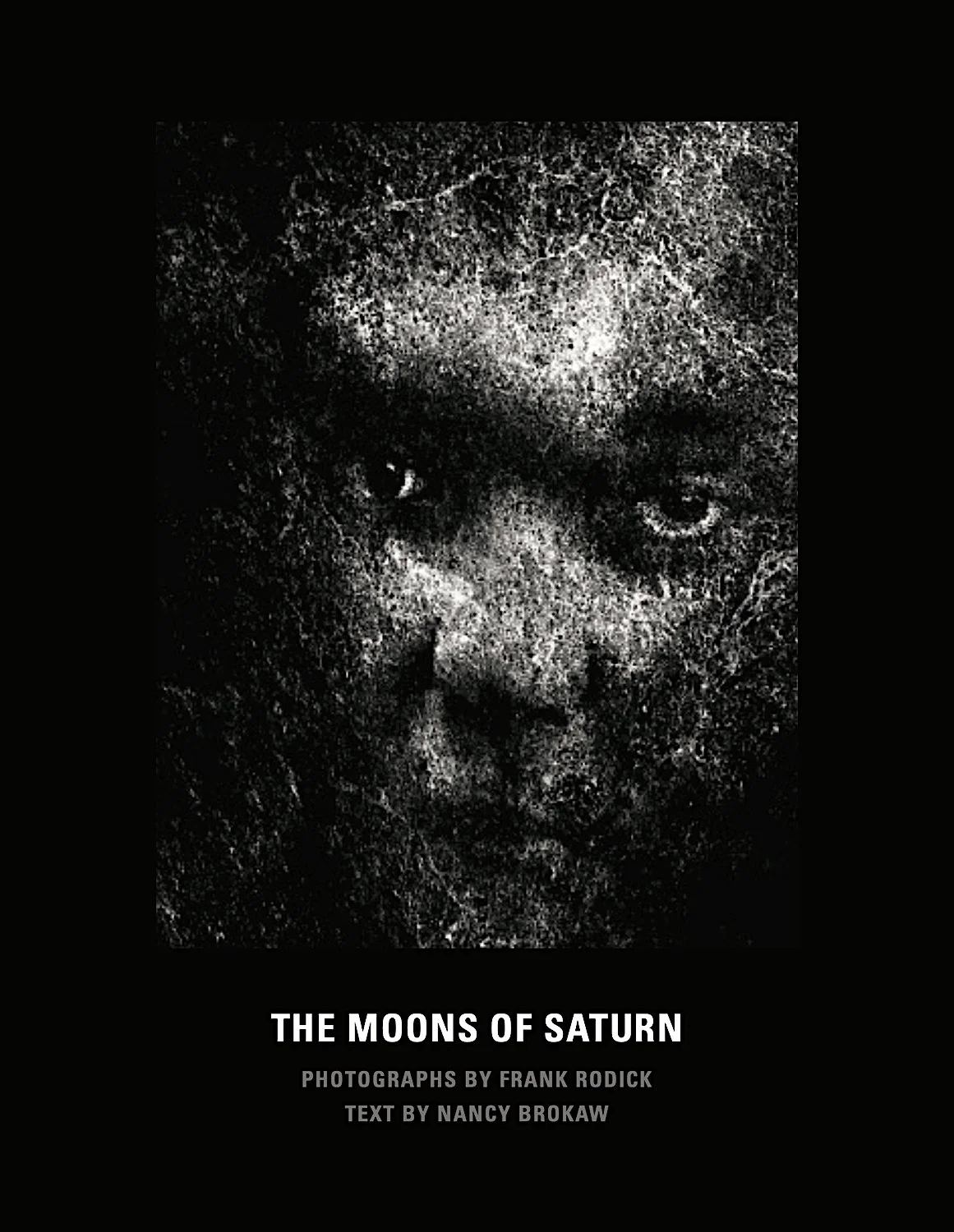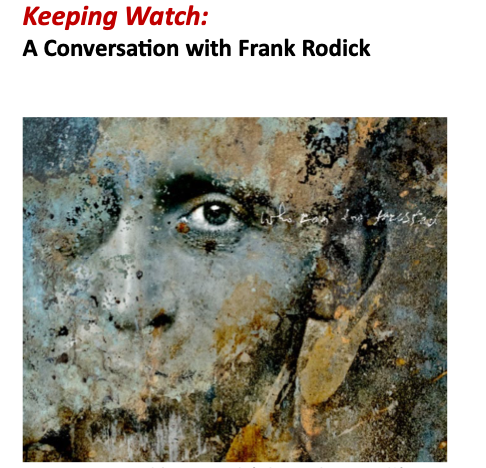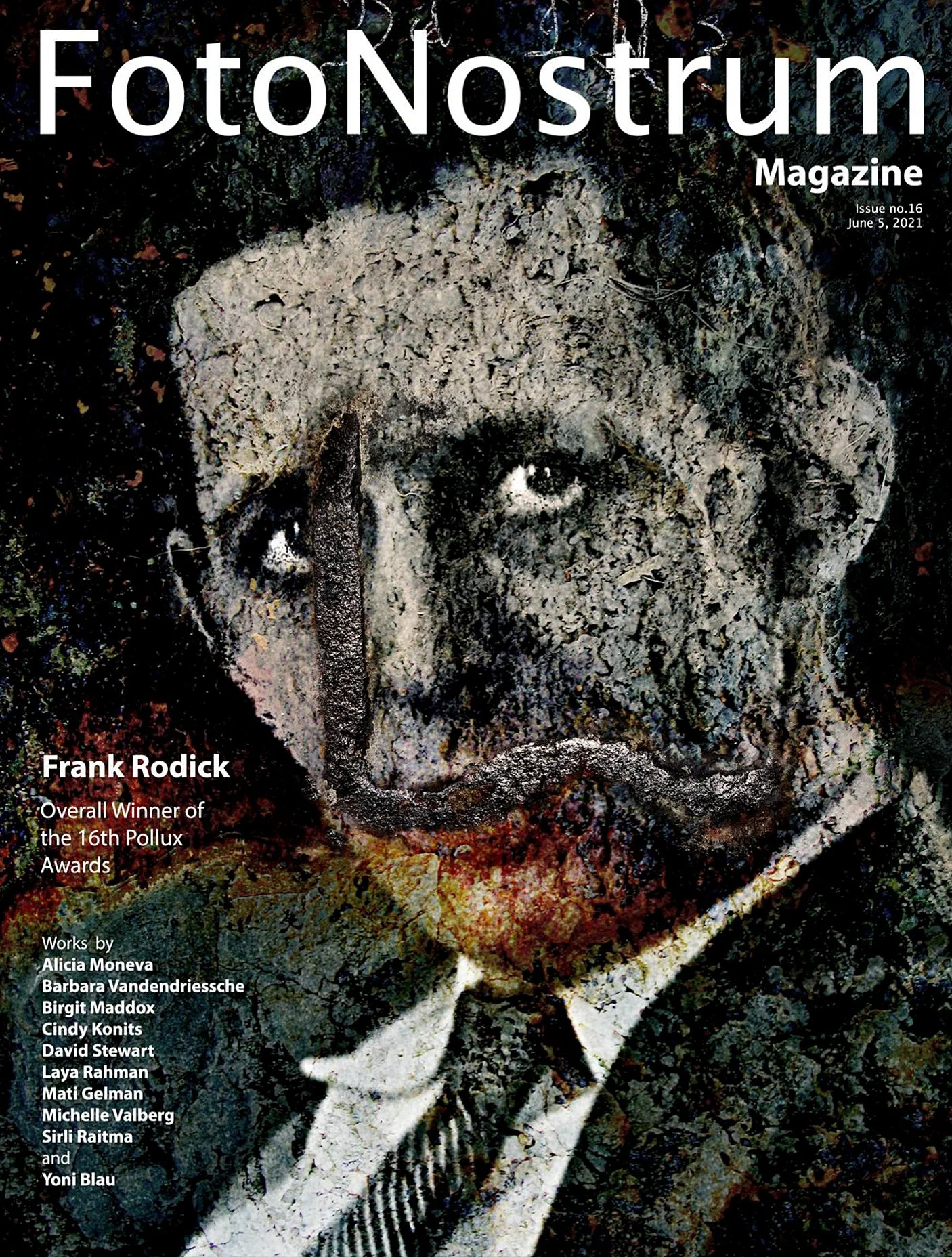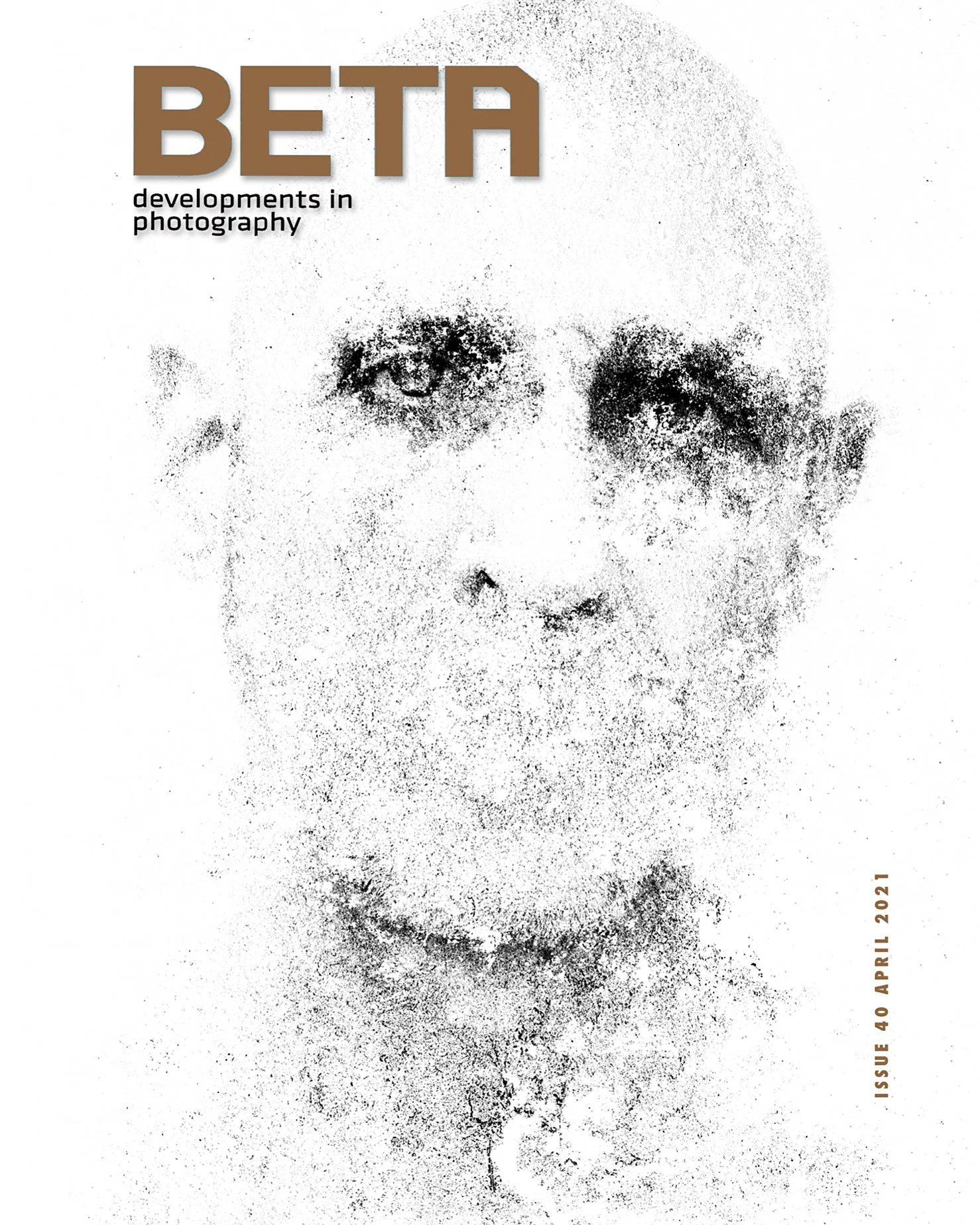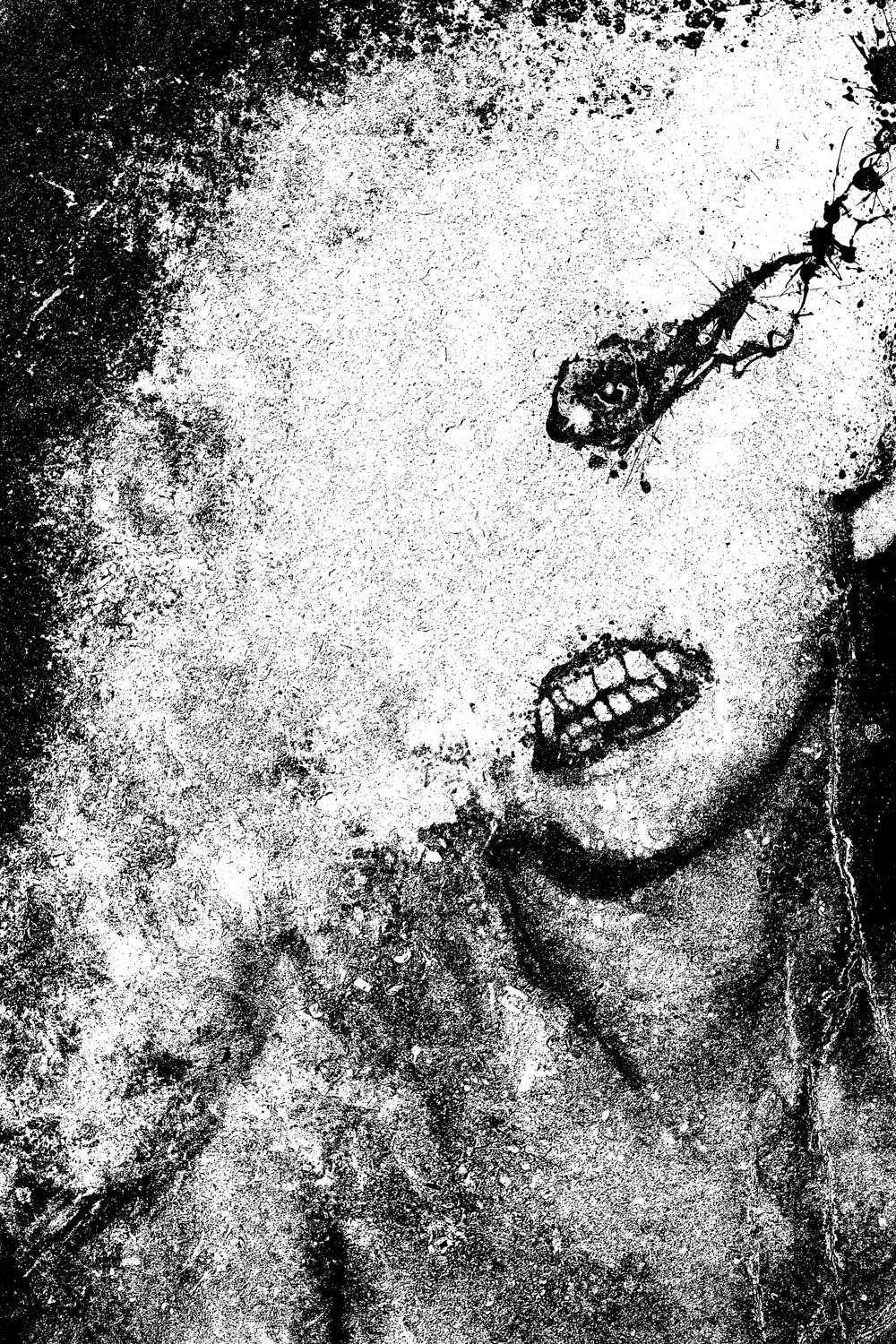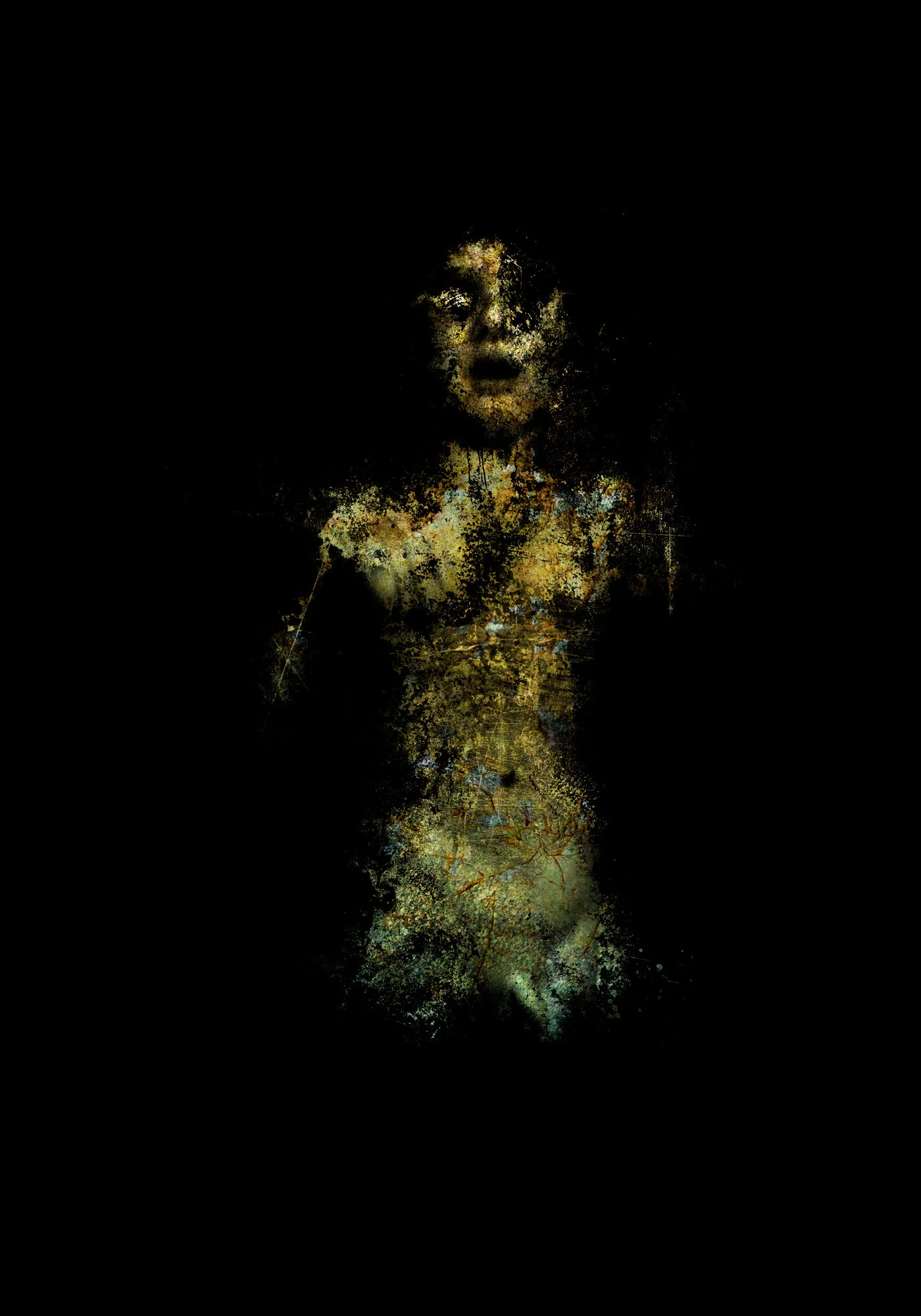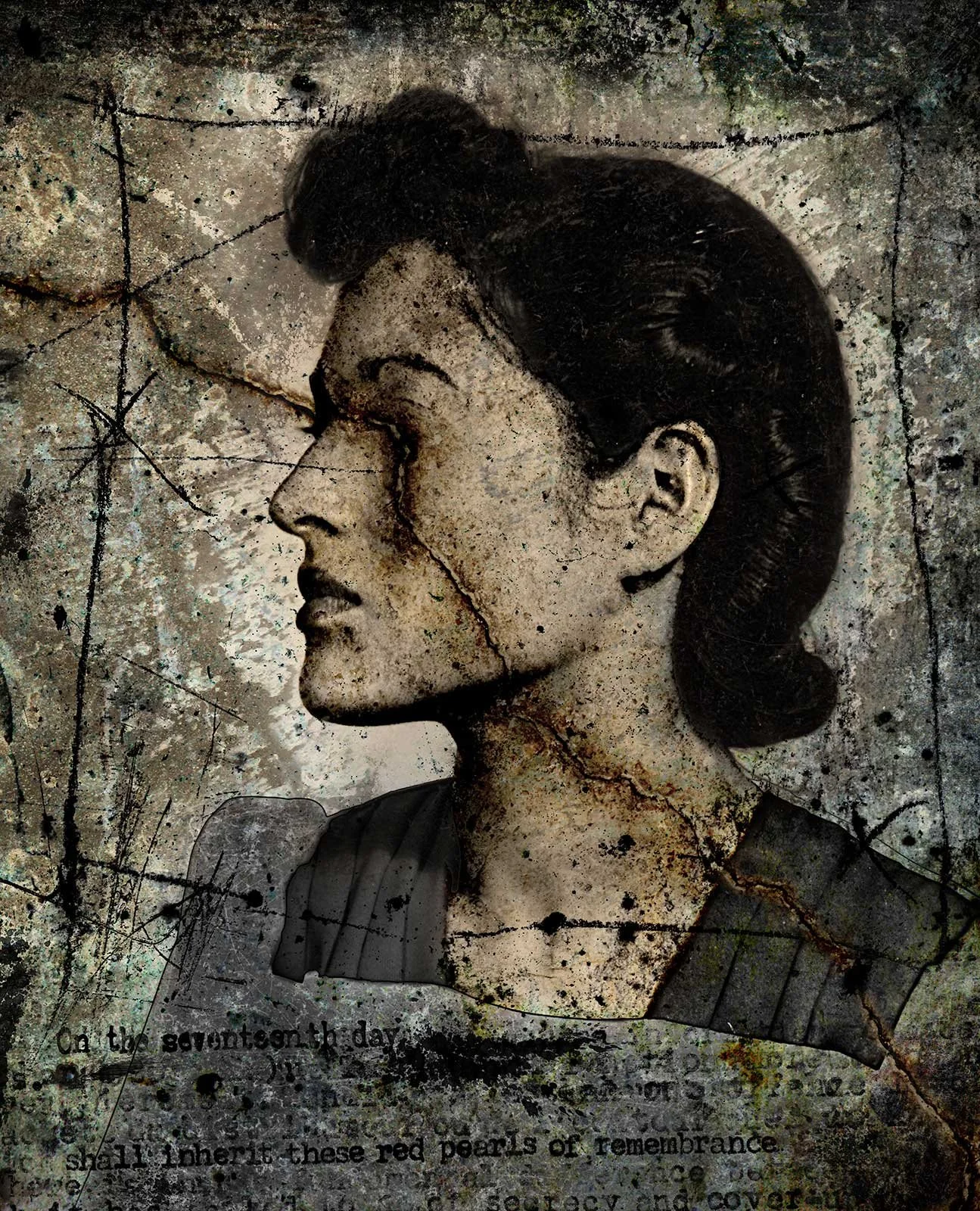press
-
![]()
Book review: The Moons of Saturn
In PhotoBook Journal contributing editor and professor of photography at DePaul University Steve Harp reviews The Moons of Saturn book by Frank Rodick and Nancy Brokaw.
Like the moons of Saturn, as viewers of the disintegrating, impenetrable images Rodick presents us, we are endlessly drawn in to a place of seeing but not knowing, hovering on the surface of the impenetrable. Who are these people rescued from oblivion, preserved only to yet remain inaccessible in the photographic void? Rodick gives us a kind of aposiopesis, an inability (or unwillingness) to proceed further, leaving out what is most important and quite likely unknowable. At the center then we are confronted with what is not there, absent yet somehow still remaining. The mystery at the center of photography.
-
![]()
Academic journal
Newly discovered: “Casus Familia or the eroded family in the photographs of Frank Rodick,” article section from “Currents in 21st century literature,” by Marcelo Bianchi Bustos and Carolina Repetto. Click here to read this analysis of the Frances, Joseph, and untitled selves series.
Above: detail from untitled self, no. 40, ©Frank Rodick, 2017
-
![]()
Interview
July 2023: Esteemed photographer, curator, and professor Don Snyder interviews Frank Rodick on three specific series: Frances, Joseph, and untitled selves.
Above: detail from Joseph (who can be trusted?), ©Frank Rodick 2016
-
![]()
Magazine feature
Frank Rodick featured in FotoNostrum.
Above: Print magazine cover with detail from Joseph (Did I fall?), ©Frank Rodick, 2016
-
![]()
Interview
Video of Katherine Ware interviewing Frank Rodick on the occasion of the exhibition Breath Taking at the New Mexico Museum of Art.
-
![]()
Magazine feature
Frank Rodick’s untitled selves featured in BETA developments in photography issue 40 2021.
Above: detail from untitled self, no. 35, ©Frank Rodick, 2017
-
![]()
Prize winner
Frank Rodick named overall winner of 2021 Pollux Prize, as well as recipient of First Prizes in Fine Art and Portrait categories.. Over 3400 artists entered the competition.
Above: detail from even Hell is beautiful at night, from The Moons of Saturn series, ©Frank Rodick 2021
-
![]()
Magazine article
Rodick has exposed himself personally in this totally uncompromising work that accepts the blame and perhaps even revels in the potential censure.
From “Everything Will Be Forgotten,” by Ashley Johnson, La Vie des Arts, no. 239.
Above: “everything will be forgotten, no. 2.1 (self-portrait as child),” ©Frank Rodick, 2013, from the series everything will be forgotten
-
![]()
Interview
On Image World, Frank Rodick and arts writer Nancy Brokaw discuss the shift from analog to digital: what it means to photography as art as well as the creative process behind it. Read “A Conversation with Frank Rodick: On Pickles and Pixels.”
Above: detail from parade for the blind, ©Frank Rodick 2015, from the series Frances.
-
![]()
Interview
I just make pictures. I make pictures to flesh out my personal obsessions and ruminations, to amuse myself, to have something to do that doesn’t bore me and doesn’t feel like a waste of time, to do something rather than nothing, sometimes to share something of myself with others, sometimes to scratch a nasty itch. What other people choose to do with the things I make isn’t up to me.
In this interview, Emese Krunák-Hajagos, publisher and writer for artoronto.ca, talks to Frank Rodick about his latest work, how people interpret it especially in light of the Russian controversy, and how he lives with his pictures.
-
![]()
Interview
...what we cannot ignore in these pictures—what makes them especially harrowing, especially discomforting—is that the subjects are Rodick’s own parents. How many of us could paint such a desiccated picture of our father? And how many would delve so relentlessly into our mother’s psyche? What stays the hand is not simply the guilt—although guilt certainly plays its part—but rather the dawning understanding that what is truly revealed is the state of one’s own soul.
In “This Great Misfortune,” Nancy Brokaw writes about Frank Rodick's work based on family life, including the l live there now series and the Frances Rodick diptychs.
Above:detail from I live there now, no. 3, ©Frank Rodick 2011, from the series I live there now
-
![]()
Interview
About the rejection of redemption I can understand why people got pissed, many still think that art should be cathartic; they think it’s OK if the artist leads me into a creepy jungle as long as he can point to a way out. The refusal of redemption means the viewer must find his way out somehow, make sense of the surroundings and put at stake his own ideas. (Alex Bocchetto)
In the provocative interview, “Of Taboos, Love, Death and Redemption: An interview with Frank Rodick” the artist discusses his work with AkinaBooks founder and publisher Alex Bocchetto.
Above: fourth panel from the polyptych Porneia, 2002, from the series Arena
-
![]()
Interview
In “Uncharted Frontiers: An interview with photographer Frank Rodick,” published in Art + Culture, M.M. Adjarian talks to the artist about his work process, favourite artists, and the role of literature in making his images.
Above: in her hand, a cupful of whispers, ©Frank Rodick 2005, from the series Arena
-
![]()
Critical review
Frank Rodick is an artist concerned above all with the body and how that tangible “image” of human presence might be conceived of in photographic terms—made visible, even as it comes undone. There is little consolation in Rodick’s world, but it is not, at the same time, lacking a sympathetic understanding of the forces that shape our ongoing predicament. His subject here is the further transfiguration of memory into something visceral, a bodily state, if one that is paradoxically without substance, a posthumous knowledge.
Photo critic Darren Campion discusses Rodick's portraits of his mother and how he uses them as "both recovery and exorcism."
Above detail from Frances (red pearls), ©Frank Rodick 2012, from the series Frances
-
![]()
Critical review
...the inevitable search for truth, even the nakedness of truth, is not achieved by way of "traditional" nudity —a simple absence of clothing. [Rodick,] thinking along such lines (heightened by an atmospheric, almost Proustian fog) attracts and confounds viewers in Masquerade. The woman's foggy nudity becomes, so to speak, a doorway to revelation and represents the aura of reminiscences outside of time.
In the article, “Masquerade,” published in Eyemazing Magazine, Karl Johnson takes a detailed look at Frank Rodick's 2011 series of nudes.
Above: detail from masquerade, no. 4, ©Frank Rodick, 2011, from the series masquerade.
-
![]()
Critical review
Rodick finds grotesque (but faithful) mirrors for our own tragic profanity, our brokenness and the impossible hope for redemption, this horribly immediate and liquid flesh, with its longings that cannot be fully satisfied, yet never denied. He goes even further to demonstrate its presence; these are dense objects, enclosures for the slaughterhouse tracings of desire.
A discussion of Rodick's work along with an interview by Darren Campion in The Incoherent Light. Read “From the Interior: Frank Rodick.”
Above: detail from untitled, no. 93, ©Frank Rodick 1998, from the series Liquid City.
-
![]()
Critical review
Rodick’s art suggests that there is something powerful in our capacity, as humans, to bear witness, to pay attention to another person’s suffering. We can lessen the sting of the world’s indifference by our own willingness to witness, which is what Rodick achieves through his careful, considerate revitalisation of these images.
A discussion of the Arena and Revisitations series in Eyemazing Magazine, by Clayton Maxwell.
Above: detail from when I dream, I dream of you, ©Frank Rodick 2010, from the series Revisitations
-
![]()
Critical review
Like Duchamp’s use of the peep show, the format Rodick has chosen forces you into an intimate relationship with what is revealed because you discover it on your own. No respectful distance separates you from the image before you, no fellow gallery-goers distract you with their chatter, no competing artworks call to you from the opposite wall.
“The Charnel House and the Peep Show,”in which, with her customary sparse and elegant prose, arts writer Nancy Brokaw analyzes Frank Rodick's Revisitations series, comparing the piece Uncovering, no. 1 (horse in barbed wire) (detail above) to works as diverse as those by Duchamps and photographs from the American Civil War.
-
![]()
Catalogue essay
The search for meaning, the drive to make sense of the fragments of our earthy abattoir, is as ineluctable a human trait as all the rest.
From Katherine Ware's essay on Frank Rodick's work from 1991 to 2010, which appears in the catalogue Labyrinth of Desire based on the exhibition by the same title, which she curated..
-
![]()
Critical review
In the Faithless Grottoes pictures, I find myself, again and again, looking—peering—into the scene. But not in a casual way. I feel locked into this exchange, held in place the way that the audience in a darkened movie theater is somehow the victim of the images flickering on the screen.
From “A Ruthless Voyeurism,” in which Nancy Brokaw discusses "voyeurism and the ethics of looking," examining Rodick's Faithless Grottoes in the context of work by artists such as Vermeer and Antonioni.
-
![]()
Curator's statement
Eroticism is restored to its original portrayal in antiquity, equated with cosmic force and divinity. Rodick takes us by the hand through this dense, dark labyrinth of many paradoxes—pain and joy, violence and release, laughter and tenderness, power and pleasure, masculine and feminine—as we can be ultimately liberated through participation in this visceral metamorphosis.
Curator of the 2006 exhibition of Rodick's work, The Longest Night, Marcia Mercadante writes about Faithless Grottoes and Arena.
Above: detail from the longest night has twenty faces, ©Frank Rodick 2007, from the series Faithless Grottoes.

